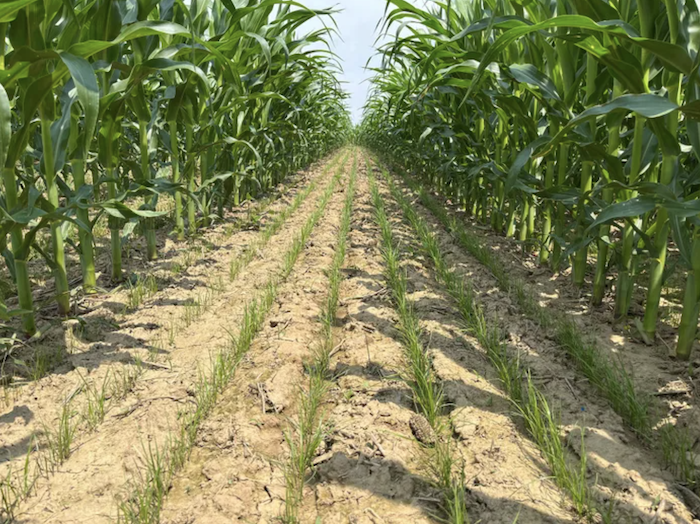
In the study, which compared interseeding cover crops at either V3 or V6 corn, interseeding at the V3 corn-growth stage lengthened the cover crop establishment period before rapid corn canopy closure. Photo courtesy of John Wallace.

The interseeder used in the cover crop project was developed by Interseeder Technologies, a company started after the development of the high-clearance grain drill at Penn State. The machine is designed to interseed three cover crop rows on 7.5-inch spacing between 30-inch corn rows. It can clear 36 inches.
| John Wallace
In the study, which compared interseeding cover crops at either V3 or V6 corn, interseeding at the V3 corn-growth stage lengthened the cover crop establishment period before rapid corn canopy closure. Photo courtesy of John Wallace.